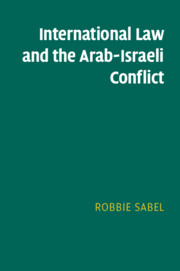Refine search
Actions for selected content:
21 results
3 - Modernization and Its Discontents: Climate Change, Sociopolitical Reform, and Demographic Anxiety
- from Part I - The Birth of the Petro-State: How Oil Reshaped the Gulf
-
- Book:
- The Gulf's Climate Reckoning
- Published online:
- 13 October 2025
- Print publication:
- 30 October 2025, pp 72-108
-
- Chapter
- Export citation
4 - ‘The Fog of War’
-
- Book:
- The Nehru Years
- Published online:
- 29 April 2025
- Print publication:
- 10 April 2025, pp 73-132
-
- Chapter
- Export citation
6 - Framing an African Atrocity
- from Part II - Narrating an Atrocity
-
- Book:
- In the Shadow of the Global North
- Published online:
- 13 November 2024
- Print publication:
- 07 November 2024, pp 119-142
-
- Chapter
- Export citation
7 - “That Is Lazy Journalism”
- from Part II - Narrating an Atrocity
-
- Book:
- In the Shadow of the Global North
- Published online:
- 13 November 2024
- Print publication:
- 07 November 2024, pp 143-160
-
- Chapter
- Export citation
Niche small States in humanitarian diplomacy: Qatar's positionality in the protection ecosystem
-
- Journal:
- International Review of the Red Cross / Volume 106 / Issue 926 / August 2024
- Published online by Cambridge University Press:
- 18 December 2024, pp. 585-609
- Print publication:
- August 2024
-
- Article
-
- You have access
- Open access
- HTML
- Export citation
4 - Gendered Noncompliance and the Breakdown of Discipline
-
- Book:
- Schooling the Nation
- Published online:
- 16 March 2023
- Print publication:
- 23 March 2023, pp 107-130
-
- Chapter
-
- You have access
- Open access
- HTML
- Export citation
6 - Religion and Ethnicity
-
- Book:
- Arabic Sociolinguistics
- Published online:
- 01 July 2022
- Print publication:
- 07 July 2022, pp 106-130
-
- Chapter
- Export citation

International Law and the Arab-Israeli Conflict
-
- Published online:
- 21 April 2022
- Print publication:
- 28 April 2022
38 - Political Psychology in the Arab Region
- from Part IV - Diversifying Perspectives in Political Psychology
-
-
- Book:
- The Cambridge Handbook of Political Psychology
- Published online:
- 17 February 2022
- Print publication:
- 24 February 2022, pp 624-639
-
- Chapter
- Export citation
Psychosis in muslim arab population. Case report and article review
-
- Journal:
- European Psychiatry / Volume 64 / Issue S1 / April 2021
- Published online by Cambridge University Press:
- 13 August 2021, p. S323
-
- Article
-
- You have access
- Open access
- Export citation
6 - Ottomans, Arabs, and Americans
-
- Book:
- The Remaking of Republican Turkey
- Published online:
- 12 June 2021
- Print publication:
- 24 June 2021, pp 150-187
-
- Chapter
- Export citation
Conflict and community: mental health in the Arab world
-
- Journal:
- BJPsych International / Volume 18 / Issue 1 / February 2021
- Published online by Cambridge University Press:
- 26 January 2021, p. 1
- Print publication:
- February 2021
-
- Article
-
- You have access
- Open access
- HTML
- Export citation
20 - Muslim Enemies, Rich Arab Friends
- from Part IV - Language, White Nationalism, and International Responses to Trump
-
-
- Book:
- Language in the Trump Era
- Published online:
- 18 September 2020
- Print publication:
- 03 September 2020, pp 277-290
-
- Chapter
- Export citation
The practice and research of cognitive behavioural therapy in Egypt: a review of the current status
- Part of
-
- Journal:
- The Cognitive Behaviour Therapist / Volume 13 / 2020
- Published online by Cambridge University Press:
- 13 April 2020, e6
-
- Article
- Export citation
Lifetime prevalence and potential determinants of psychotic experiences in the general population of Qatar
-
- Journal:
- Psychological Medicine / Volume 50 / Issue 7 / May 2020
- Published online by Cambridge University Press:
- 28 May 2019, pp. 1110-1120
-
- Article
-
- You have access
- Open access
- HTML
- Export citation
168 - Middle Eastern Shakespeare
- from Part XVII - Shakespeare as Cultural Icon
-
-
- Book:
- The Cambridge Guide to the Worlds of Shakespeare
- Published online:
- 17 August 2019
- Print publication:
- 21 January 2016, pp 1249-1254
-
- Chapter
- Export citation
Part XVII - Shakespeare as Cultural Icon
-
-
- Book:
- The Cambridge Guide to the Worlds of Shakespeare
- Published online:
- 17 August 2019
- Print publication:
- 21 January 2016, pp 1183-1260
-
- Chapter
- Export citation
Addressing physical inactivity in Omani adults: perceptions of public health managers
-
- Journal:
- Public Health Nutrition / Volume 17 / Issue 3 / March 2014
- Published online by Cambridge University Press:
- 25 January 2013, pp. 674-681
-
- Article
-
- You have access
- HTML
- Export citation
Prejudice and Discrimination From Two Sides: How Do Middle-Eastern Australians Experience It and How Do Other Australians Explain It?
-
- Journal:
- Journal of Pacific Rim Psychology / Volume 6 / Issue 1 / June 2012
- Published online by Cambridge University Press:
- 14 August 2012, pp. 18-26
- Print publication:
- June 2012
-
- Article
-
- You have access
- HTML
- Export citation
Correlates of Omani adults’ physical inactivity and sitting time
-
- Journal:
- Public Health Nutrition / Volume 16 / Issue 1 / January 2013
- Published online by Cambridge University Press:
- 25 May 2012, pp. 65-72
-
- Article
-
- You have access
- HTML
- Export citation
